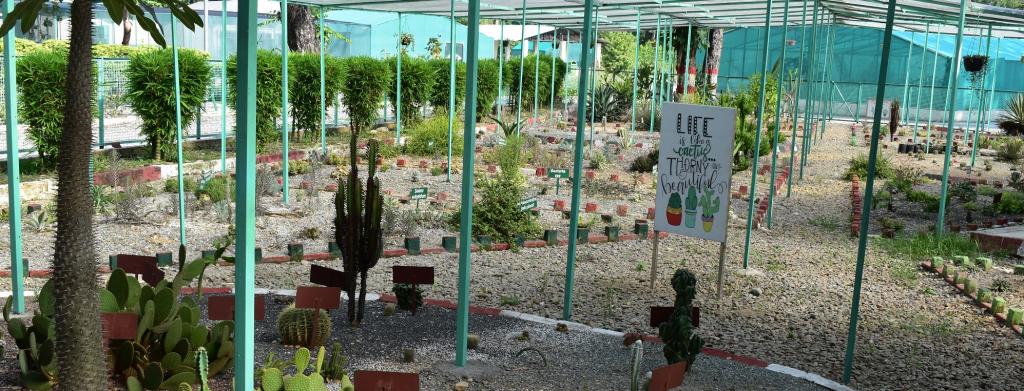U’khand’s first biodiversity gallery opens in Haldwani

Sunday, 26 December 2021 | PNS | Dehradun
Uttarakhand’s first bio diversity gallery has started in Haldwani, with funding from Japanese International Cooperation Agency (JAICA). The main objective of the gallery is to showcase lesser known aspects of the rich biodiversity of the State. The chief feature of this bio diversity gallery is depiction of about 101 peculiar species of flora and fauna, native to the State, showing threat status, and information about habitat and ecological role or uses. The gallery includes largest Lily of world found in State (Giant Himalayan Lily), largest venomous snake of world (King Cobra), highest altitude venomous snake (Himalayan Pit Viper), largest honeybee of world (Giant Himalayan Honey Bee), largest moth of world (Atlas moth), largest marten of world (Yellow throated marten), largest insectivorous bat of India (Great Himalayan Leaf nosed bat) as well as other interesting species, naturally found in State like salty headed parakeet (only species of parakeet family which migrates in winter), Himalayan langur (only primate species found in Himalayas). In addition to them some of the interesting species of native insectivorous plants, fern, moss, liverwort, grass species and peculiar fauna like Himalayan Marmot (highest elevation dwelling mammal of world – found at Tibet border), Himalayan Pika, flying squirrel and Yellow headed tortoise are also included with the species of Rhododendron (Rhododendron Arboreum).
There are eight other sections displayed along with these 101 biodiversity icons in the gallery. One section displays abandoned nests of various species like Weaver bird, King cobra (only reptile species which makes nests). Another section displays unique biodiversity products of the State like Keedajadi (world’s costliest fungus), red honey (produced by giant honey bee gallery and one of the costliest honey in the world). Moreover, bio diversity products of the State which have been given a Geographical Indicator (GI) tag like butter from Cheura Tree and Ringal handicraft are also present.
One of the sections displays soil diversity of State showing all the eight type of soil found in State from Terai/Bhabar Zone to Alpine areas.A section is also dedicated to the biodiversity of medicinal herbs of Uttarakhand including extracts from Ashtavarga and Dashmool species. Other sections display the orchid, moss, and lichen biodiversity of the State. Agricultural biodiversity of the State with seeds of local crops which have become rare now and also seeds of prominent forestry species are also included in the gallery.
Uttarakhand has exceptionally rich bio diversity in all kinds of flora and fauna along with three agro climatic zones – tropical, temperate and alpine, positioning it uniquely and also being at the confluence of the Western Himalaya and the Eastern Himalayas. However, only a few species out of this rich depository are currently known in public domain. Experts point out that the bio diversity gallery is an attempt to educate people about the lesser known species along with their benefits.





